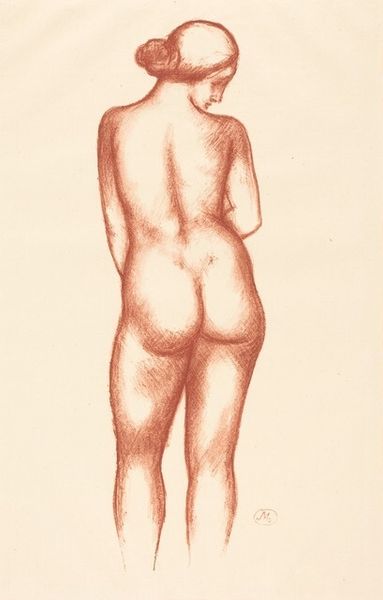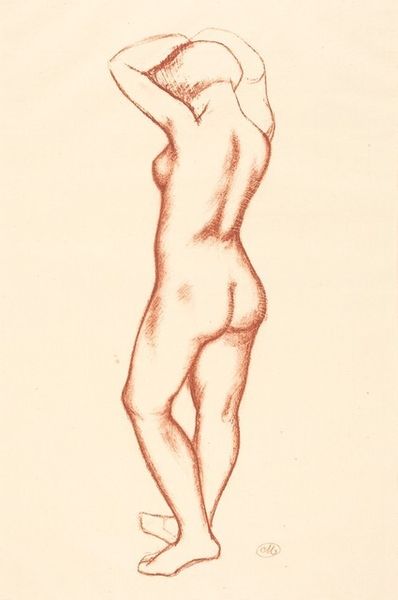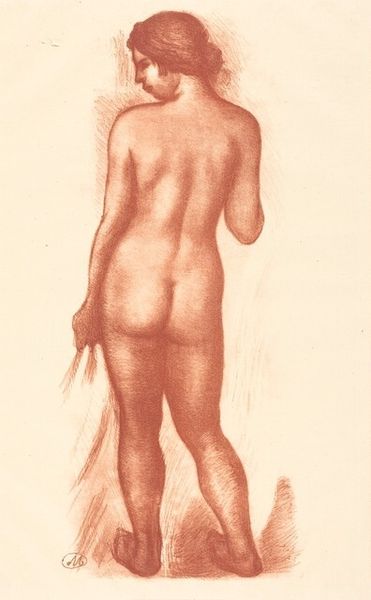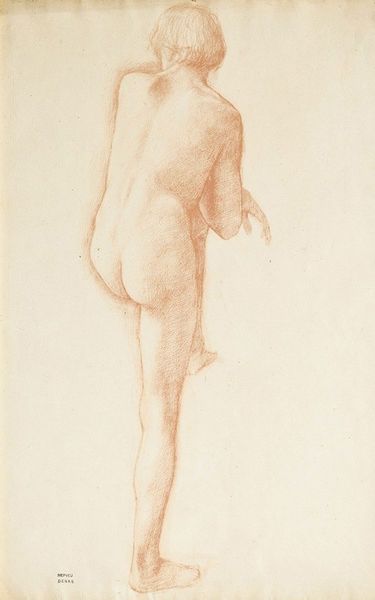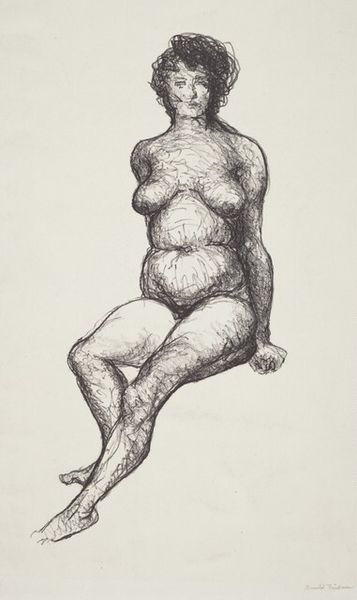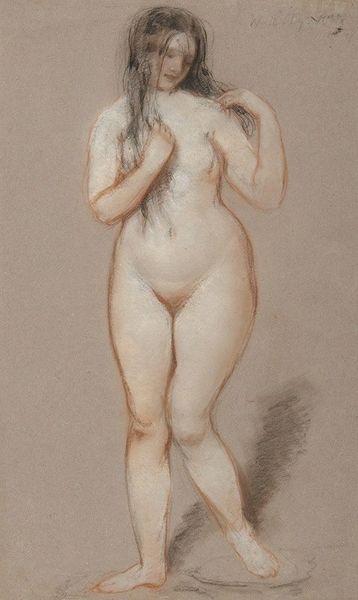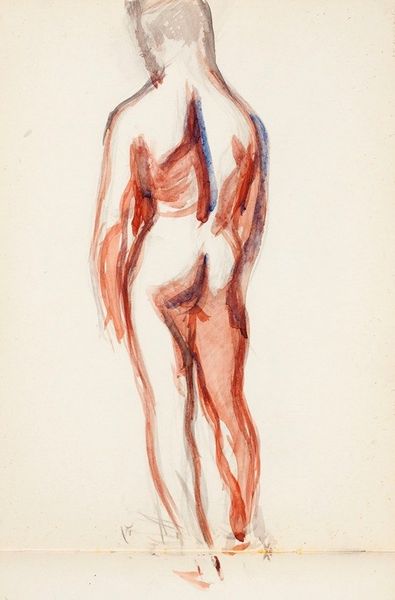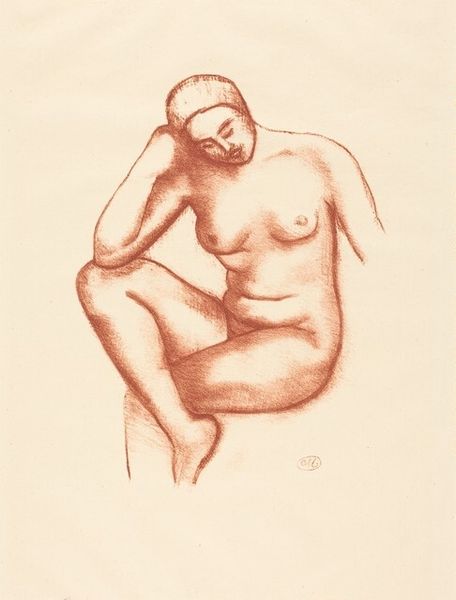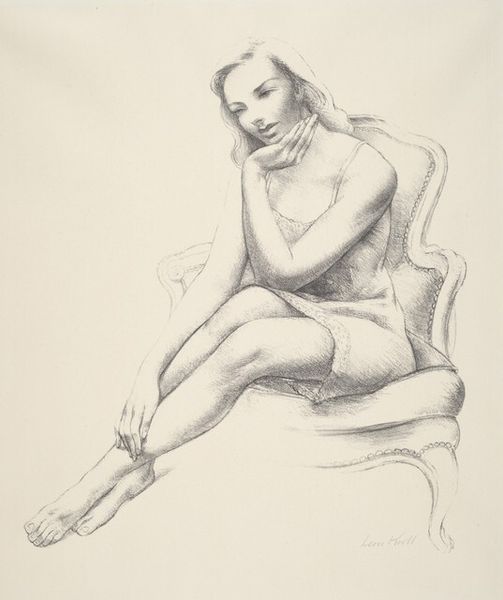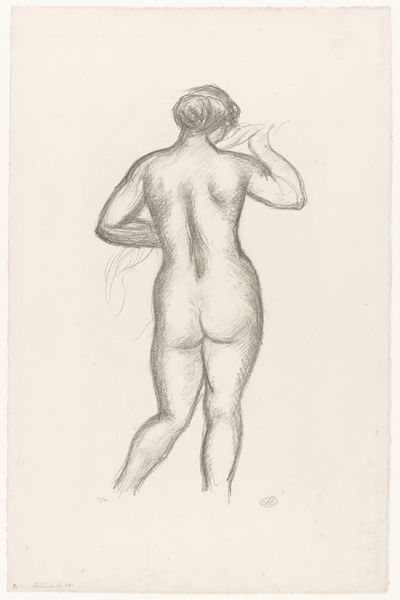
#
pencil drawn
#
amateur sketch
#
facial expression drawing
#
light pencil work
# print
#
pencil sketch
#
portrait reference
#
pencil drawing
#
animal drawing portrait
#
portrait drawing
#
pencil work
Copyright: National Gallery of Art: CC0 1.0
Curator: Aristide Maillol's "Ovid's 'The Art of Love'" from 1935 is before us, rendered in sanguine pencil. What’s your initial take? Editor: Well, there's an undeniable vulnerability here. The turned back, the averted gaze...It makes me consider ideas of power dynamics within artistic representation, especially with the classical subject matter. Curator: Absolutely, though let's first acknowledge how skillfully Maillol balances mass and line to suggest volume with such minimal means. Notice how the gentle curves delineate form and emphasize the figure’s roundness. Semiotically speaking, this embodies the classical ideal of beauty that he continuously pursued. Editor: While I see that formal elegance, I find it hard to ignore the larger conversation it invokes. Who is this ‘ideal’ serving, who is excluded? It invites a critical dialogue concerning the male gaze and its historical implications for female self-perception. Curator: Of course, but to understand his contribution we need to appreciate the internal formal language at play here: line weight, tonal modulations and anatomical exactitude. In itself it's an interesting structural proposition in its almost unfinished rendering and how Maillol leaves open space for interpretation. Editor: Fair enough, but art never exists in a vacuum, right? How can we extricate Maillol's aesthetic choices from their social consequences and philosophical underpinnings? Isn't this idealized form complicit within those unequal systems of visual representation and meaning-making? Curator: I will say, it invites endless interpretations and even opposing standpoints depending on which school of theory we're drawing from, doesn't it? Editor: Indeed. It's a potent reminder that every artwork has multiple entry points depending on our perspective, politics, and theoretical lens. Let’s continue down that road as we approach the next piece...
Comments
No comments
Be the first to comment and join the conversation on the ultimate creative platform.

